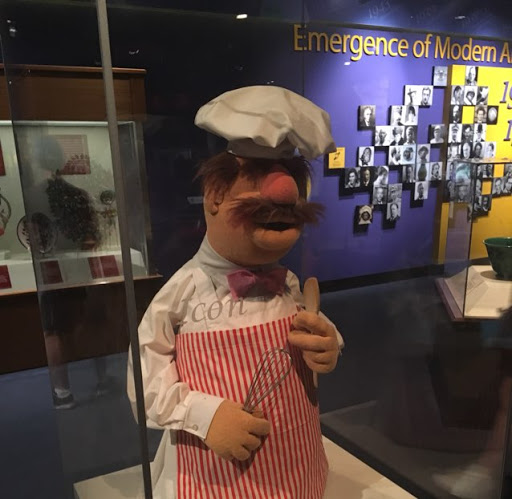Richard Lee Shook
age ~82
from Sopchoppy, FL
- Also known as:
-
- Richard L Shook
- Dick L Shook
- Rick L Shook
- Lee R Shook
- Richard Shoo
Richard Shook Phones & Addresses
- Sopchoppy, FL
- Girard, OH
- Fogelsville, PA
- Tallahassee, FL
- Lake Wales, FL
Us Patents
-
Methods And Apparatus To Reduce Growth Formations On Plated Conductive Leads
view source -
US Patent:7368326, May 6, 2008
-
Filed:May 27, 2004
-
Appl. No.:10/855148
-
Inventors:John William Osenbach - Kutztown PA, US
Brian Dale Potteiger - Reading PA, US
Richard Lawrence Shook - Fogelsville PA, US
Brian Thomas Vaccaro - Mertztown PA, US -
Assignee:Agere Systems Inc. - Allentown PA
-
International Classification:H01L 21/50
H01L 21/48
H01L 21/44
H01L 23/495
H01L 23/52
H01L 23/48
H01L 23/40 -
US Classification:438123, 438106, 438124, 257666, 257677, 257734, 257735, 257736, 257766, 257692, 257E23053, 257E23054, 257E23031, 257E23035
-
Abstract:A process includes annealing one or more plated conductive leads at a predetermined temperature. The one or more plated conductive leads are plated with one or more layers, where each layer comprises a material. The predetermined temperature is greater than or equal to approximately a melting point of one of the materials. The annealing can reduce growth formations, such as whiskers, on the one or more conductive leads. Lead frames and other devices having plated conductive leads may be subjected to the process, and the resultant plated conductive leads will have fewer growth formations than plated conductive leads not subjected to the process. The plated conductive leads may be trimmed and formed prior to or after the anneal.
-
Whisker-Free Lead Frames
view source -
US Patent:8013428, Sep 6, 2011
-
Filed:Jul 28, 2009
-
Appl. No.:12/462069
-
Inventors:Kultaransingh N. Hooghan - Murphy TX, US
John W. Osenbach - Kutztown PA, US
Brian Dale Potteiger - Reading PA, US
Poopa Ruengsinsub - Bangkok, TH
Richard L. Shook - Fogelsville PA, US
Prakash Suratkar - Bangalore, IN
Brian T. Vaccaro - Mertztown PA, US -
Assignee:LSI Corporation - Milpitas CA
-
International Classification:B32B 15/20
H01L 23/495
H01L 23/28
C22F 1/08 -
US Classification:257666, 257687, 257787, 428647, 428648, 428929, 428941, 148536, 148537, 29827, 4273837, 174521, 174565
-
Abstract:A method of fabricating an interconnection between a region of copper material and a conducting region is disclosed. The method includes a step of forming a region of tin material and a step of forming a region of nickel material. The method also includes a step of melting the tin material to induce formation of a nickel/tin/copper intermetallic composition at an interface between the region of copper material and the conducting region. The region of tin material and the region of nickel material define the interface between the region of copper material and the conducting region.
-
Ball Grid Array (Bga) Package Having Corner Or Edge Tab Supports
view source -
US Patent:20050077080, Apr 14, 2005
-
Filed:Oct 14, 2003
-
Appl. No.:10/682969
-
Inventors:Adesoji Dairo - Macungie PA, US
Jeffery Gilbert - Schwenksville PA, US
Christopher Horvath - Allentown PA, US
Richard Shook - Fogelsville PA, US
Ebyson Thomas - Allentown PA, US
Brian Vaccaro - Mertztown PA, US -
International Classification:H05K007/06
-
US Classification:174255000, 361804000, 174260000, 257778000
-
Abstract:The present invention includes tab supports on the solder ball side of a BGA package substrate. The tab supports are preferably sized in a height direction to avoid or prevent a warped corner or edge of a BGA substrate from excessively pressing down on the solder balls when warping occurs, most often during the high temperature solder-reflow process. Exemplary tab supports comprise small standoff tabs placed in all four corners of the lower substrate of a BGA package, and/or on all four edges of the lower substrate. The invention has particular application to a plastic BGA (PBGA) package.
-
Whisker-Free Lead Frames
view source -
US Patent:20060068218, Mar 30, 2006
-
Filed:Sep 28, 2004
-
Appl. No.:10/951430
-
Inventors:Kultaransingh Hooghan - Murphy TX, US
John Osenbach - Kutztown PA, US
Brian Potteiger - Reading PA, US
Poopa Ruengsinsub - Bangkok, TH
Richard Shook - Fogelsville PA, US
Prakash Suratkar - Bangalor, IN
Brian Vaccaro - Mertztown PA, US -
International Classification:B32B 15/00
B32B 15/01 -
US Classification:428615000, 428646000, 428647000, 148527000
-
Abstract:The electrical and mechanical properties of structures such as lead frames and other electrical/electronic devices containing, during processing, copper/tin interfaces are improved by introduction of nickel to such interface. Typically, a weight percentage of nickel to tin in the range 1 to 12 weight percent yields upon melting of the tin, an intermetallic compound with essentially no occluded, unbound tin. Thus undesirable anomalous structures such as tin needles and substantially non-planar interface compositions are avoided. Advantageously a nickel/tin/copper intermetallic interface that is substantially planar is formed in the substantial absence of needle-like tin structures.
-
Whisker-Free Electronic Structures
view source -
US Patent:20060266446, Nov 30, 2006
-
Filed:May 25, 2005
-
Appl. No.:11/136911
-
Inventors:John Osenbach - Kutztown PA, US
Brian Potteiger - Reading PA, US
Richard Shook - Fogelsville PA, US -
International Classification:C22C 13/00
-
US Classification:148538000
-
Abstract:It has been found that composition containing copper, tin, and silver prevents tin whisker formation on an electronic structure while allowing solders to wet such structures during soldering processes. It has further been found that conventional techniques, such as electrolytic plating, electroless plating, wet dipping and vapor deposition, for forming such materials have undesirable limitations and/or characteristics. However, by forming a Ag/Sn precursor on a copper containing electronic structure and inducing a self-limiting reaction between the precursor and the copper of the structure, the advantageous Ag/Sn/Cu material is formed without the undesirable limitations and characteristics associated with conventional techniques.
Name / Title
Company / Classification
Phones & Addresses
SHOOK PROCESSING SEED, LLC
Resumes

Driver
view sourceWork:
Terry Miller Trucking
Driver
Driver

Richard Shook
view source
Richard Shook
view source
Richard Shook
view source
Richard Shook
view source
Richard Shook
view source
Richard Shook
view source
Artist
view sourceWork:
Artist
License Records
Richard Shook
License #:
32913 - Active
Category:
Dual Towing Operator(CT)/VSF Employee
Expiration Date:
Nov 12, 2017
Richard Shook
License #:
DVM00317 - Expired
Category:
Veterinary Medicine
Issued Date:
Jun 24, 1987
Expiration Date:
Jan 5, 1992
Type:
Veterinarian
Googleplus

Richard Shook
Work:
General Dynamics IT - Help Desk (2009)
Education:
Franklin Delaneo Roosevelt Sr Hig - Diploma
Tagline:
This job would be great if it wasn't for the fucking customers!

Richard Shook

Richard Shook

Richard Shook

Richard Shook

Richard Shook
Youtube
Myspace
Flickr
Classmates

Richard Shook
view sourceSchools:
Berea High School Greenville SC 1981-1985
Community:
Kenneth Nolte

Richard C. Shook
view sourceSchools:
Fairforest High School Spartanburg SC 1952-1956
Community:
Ken Stubbs, Patricia Tina, Shelby Wright

Richard Shook
view sourceSchools:
J F kennedy highschool Taylor MI 1975-1979
Community:
Mike Macbrien, Gail Lopicola, Thaddeus Lindsay

Richard Shook
view sourceSchools:
Riverview High School Oakmont PA 1978-1982
Community:
Robert Degitz, Jeff Singer, Janet Smith

Richard Shook
view sourceSchools:
Bayou Meto Elementary School Jacksonville AR 1996-2000
Community:
Karen Jackson, Tina Farmer, David Robinson, Denise Judge

Richard Shook
view sourceSchools:
Greater Johnstown High School Johnstown PA 1978-1982
Community:
Adrian Harris, Sarah Russell

Richard Shook
view sourceSchools:
Rush Springs High School Rush Springs OK 1973-1977
Community:
Cammy Kemp, Catherine Dunn, Cheryl Gilley

Bayou Meto Elementary Sch...
view sourceGraduates:
Richard Shook (1996-2000),
Ami Hester (1984-1987),
Brandon Thornton (1987-1990),
Ruth Covington (1968-1974),
Stephanie Quesinberry (1980-1986)
Ami Hester (1984-1987),
Brandon Thornton (1987-1990),
Ruth Covington (1968-1974),
Stephanie Quesinberry (1980-1986)

Richard Shook
view source
Richard Shook
view source
Richard Shook
view source
Richard A. Shook
view source
Richard Shook
view source
Richard Shook Shooky
view source
Richard Shook
view source
Richard Shook
view sourceGet Report for Richard Lee Shook from Sopchoppy, FL, age ~82














